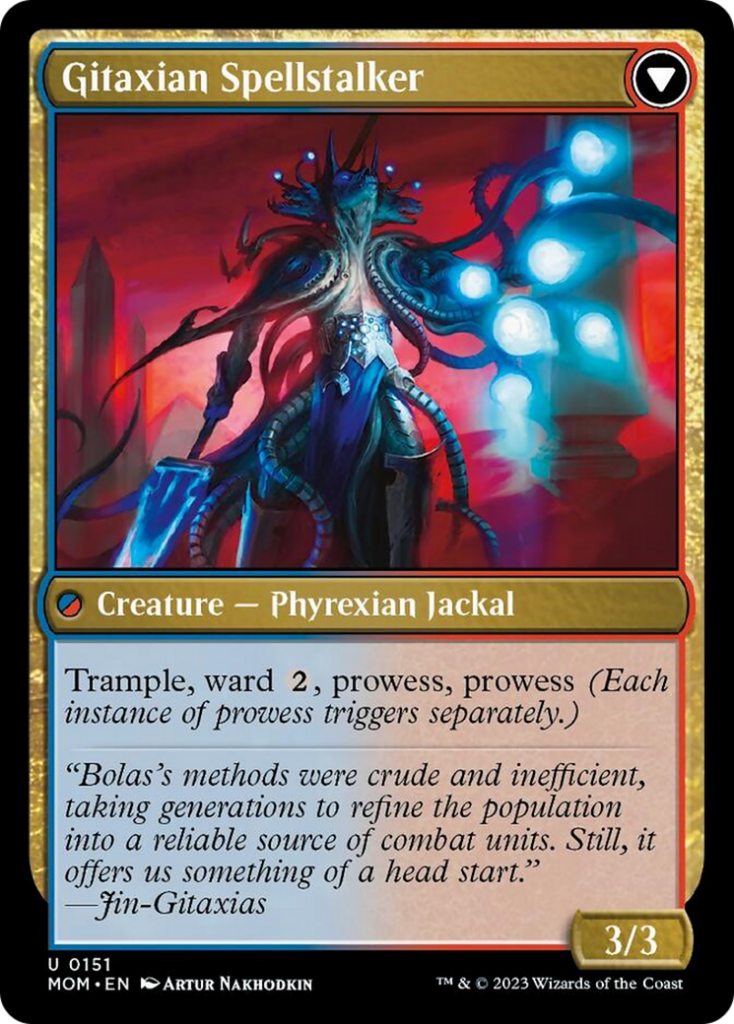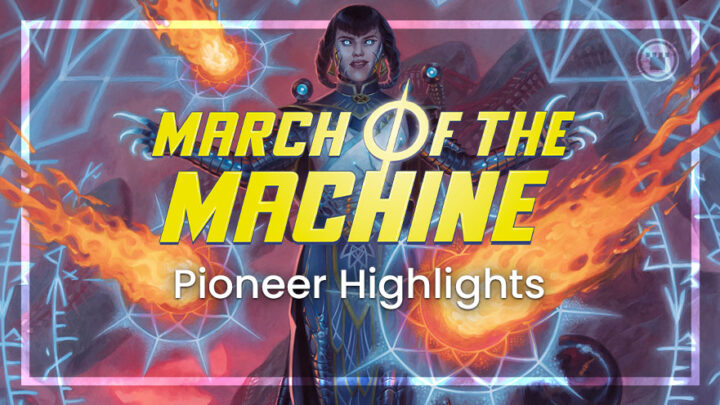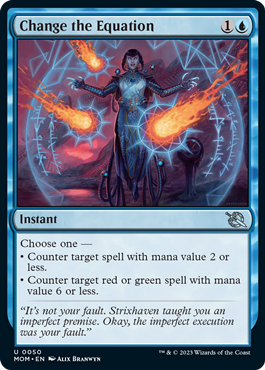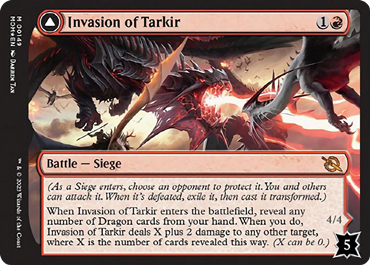Elesh Norn may be a failed pioneer of the multiverse, but there are still plenty of exciting cards from March of the Machine worth using to dominate opponents. So, today we’re going to look at five cards you should keep an eye out for in the Pioneer format.
Deeproot Wayfinder
This is a card with an interesting effect. Not many cards in Pioneer allow you to play lands from your graveyard, as the only really playable option before was Soul of Windgrace.
This opens up the doors to new decks. But given what we are going to try and do with this card, a three color legend won’t be very helpful. Fortunately, Ramunap Excavator, previously a fringe card in Pioneer, also allows you to play a land from your graveyard each turn.
So once we can play lands over and over again, what are we going to do with that power?
There aren’t many lands you want to recur from the graveyard in this format, however there are a few cool ones. Blast Zone is a great removal spell, especially for decks like mono blue spirits.
Fabled Passage and the Streets of New Capenna fetch lands are a good way to just guarantee a land drop every turn. All the Kamigawa channel lands work great with these cards as well, letting you get both the effect and the long term gain of a land.
None of those are my personal favorite and the thing I most want to do, though: Field of Ruin and Demolition Field. These two are essentially the same card (one simply works better in Commander), but together they let us blow up all the lands and pick apart our opponent’s mana base.
In the early game, it’s easy to just play an interactive game with cheap threats and spells. Then we start activating a Field effect every turn. Combine this with answer spells like Assassin’s Trophy and players are going to get locked out of the game in no time.
Bloodfeather Phoenix
Burn hasn’t done anything in pioneer. Even in the early days of the format, the archetype was a fringe player. However, this set looks to help the burn deck AND the prowess deck. We’ll look at the latter later in the article.
Bloodfeather Phoenix specifically calls out instant and sorcery cards dealing damage, which is often what burn wants to do. This means we can curve out playing our Phoenix, wait for opponents to kill it and effectively add an extra two damage to a future burn spell. That makes it hard for your opponent to ever stabilize.
This is also the perfect card to use with discard enablers. And while we don’t have stuff like Faithless Looting in this format, we do have cards like Bedlam Reveler. Being rewarded for playing all these instants and sorceries and working great with our Phoenix sounds good to me.
Khenra Spellspear // Gitaxian Spellstalker


As for the other card that goes into red decks, meet Khenra Spellspear. It fits much more into a prowess deck than a traditional burn deck (the back is what’s really eye-catching here), but this card is super strong. There’s protection and three keywords that will push through huge chunks of damage.
Prowess has been a big to fringe player in Modern ever since the release of Lava Dart, and it showed players just how powerful adding free damage to each spell can be. And it’s also worth mentioning that I do think we are close to having a blue/red prowess deck in Pioneer that becomes a real player by leaning on cards like treasure cruise, sprite dragon, storm wing entity and this card.
However, one problem often facing prowess decks is opponents chump blocking your huge creatures. This is why you will often see cards like Crash Through in these lists, giving creatures a way to force through damage.
That will never be a problem if you can flip your Spellspear, and that fact can’t be understated. While you have to pay one more mana than Swiftspear or Soul-Scar Mage to get this on the board, Pioneer is less hostile to spending a bit more mana on your early threats when compared to Modern.
Ultimately I think the success of prowess will come down to the cheap spells you play alongside cards like Khenra Spellspear. Still, it is a good enough creature to clear the bar and not necessarily force you into a second color, which has been part of the Pioneer deck’s problem.
Change the Equation
I firmly believe this card changes the math on counterspells in pioneer.
*holds for laughter to stop.*
Now that the great and original jokes are out of the way, how will this card fit into decks?
Players have been quick to compare it to Aether Gust, which is reasonable. They are similar hate cards. However, this card can be main decked very easily since it will always be able to counter cheap spells.
Then, randomly, you will play against a deck with red or green and unlock this super counterspell. I’m not suggesting you throw four of these into every blue deck, but having one in your control deck is very reasonable.
But let’s circle back to the Aether Gust comparison. Is this strictly better? The answer is usually no.
Aether gust’s ability to hit on board creatures and return them to the deck is actually very important for many decks — especially tempo and aggressive ones. But control decks would often rather have a hard answer to the problem in front of them, most of the time.
In the end, Knowing which hate card you want is going to be important in deck building and the way you approach your games.
Invasion of Tarkir
Everyone is writing this card off because they think it’s a dragon support card. It technically is, but in reality, you don’t need any dragons to play this card.
Invasion of Tarkir will always be at least two damage. And does that remind you of any card in pioneer (like Bonecrusher Giant)?
While Bonecrusher is much stronger, these cards have similar play patterns as an early answer that turns into a threat later. Also this threat is very real. A 4/4 flier that shocks every time it attacks is great.
But does this straight up replace Bonecrusher Giant? I don’t think so, but it does open the door to decks that want more effects like this. For example, I think it would be pretty rare for a deck like Rakdos midrange to play more than one copy of this card, or even that in non-Aggro heavy metas.
However, if you’re playing a big, Midrange deck that’s mono red, then you might be very interested in having Bone Crusher five through eight — especially with cards like Glorybringer and Mutavault in the format allowing you to trigger this from hand and on board more often.
The deck I am describing was a deck seen during early Pioneer: Chonky Red. While that deck fell to the wayside as the format evolved, we have seen a lot of powerful, mono red Midrange tools during the last few years.
It’s just that the fail rate on this card is very low. It almost always will have targets, and that means you traded a card for card. Plus, if the game is starting to stall out, you can unlock this dragon on the back side.
You also can shoot an Invasion of Tarkir with your second copy, and that is just a very reasonable bail out clause. This is a card I am very interested in seeing in the format.
End step
That does it for the five cards to look out for in Pioneer from March of the Machine. This set has so many exciting and interesting cards that we didn’t have time for them all — like the infinite combo decks that Rona, Herald of the Invasion opens up!
But if that sounds exciting, make sure to check back next week when we show off some new Pioneer decks using cards from the latest set.

Mason Clark is a grinder in every corner of the game who has played at the pro level and on the SCG Tour with Team Nova. Whether he’s competing in Standard, Historic or Modern, Mason plays with one goal in mind: to be a better player than he was the day before. Check out his podcast, Constructed Criticism, and catch his streams on Twitch.





